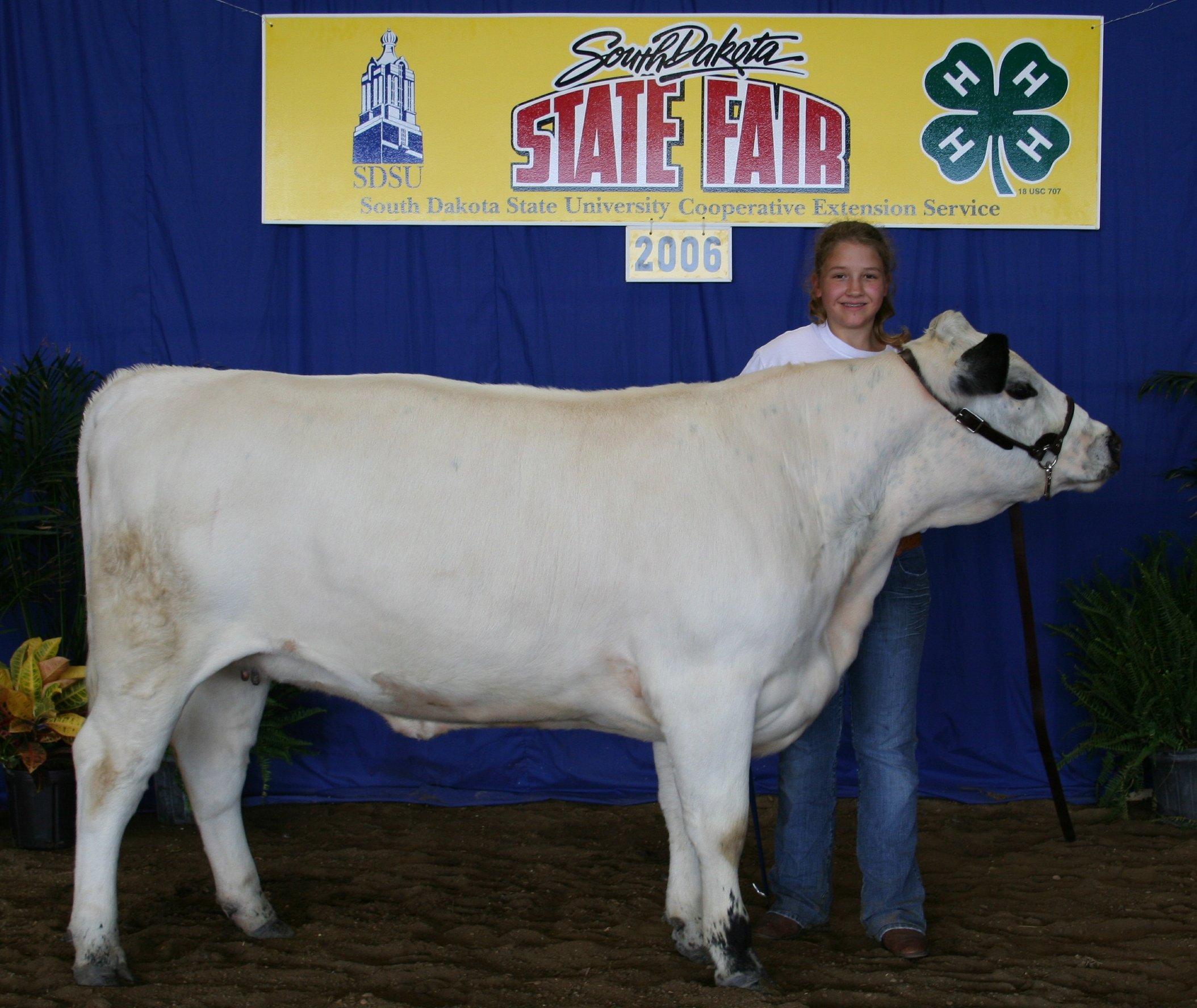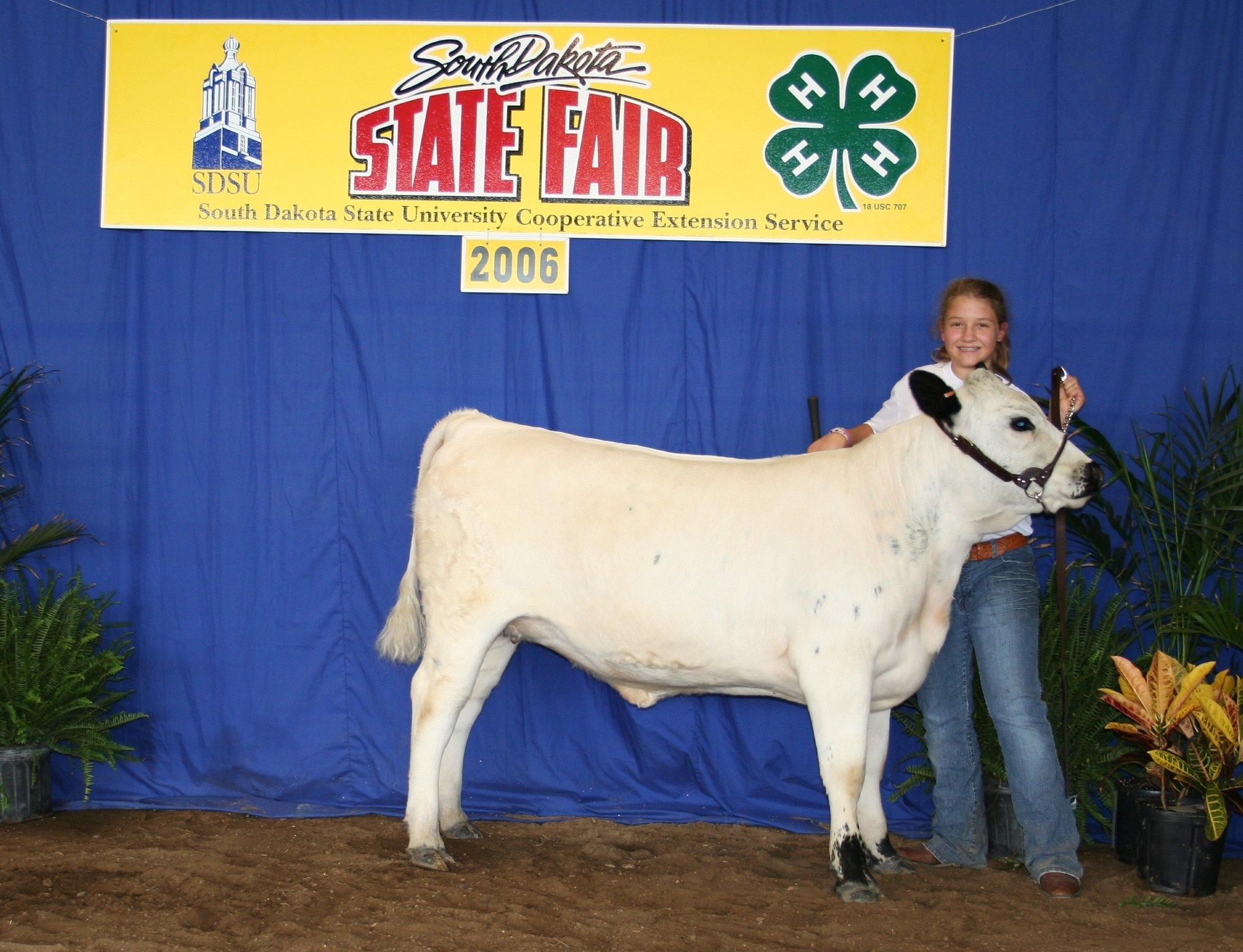Our British White Story
In 2005 a friend of ours gave us an old farm magezine. My husband and I had looked at it and found an add for the British White Cattle. My daughter, Jennifer, was 12 years old at the time. She wanted to show cattle in 4-H and we thought the British White would make the perfect breed for her because they are so quiet and gentle. So we called Morris Halliburton in Texas adn asked for all the information we could get and possible breeders in our area. We chose a breeder in Bellwood, Nebraska, Nancy and Walter Bohaty. My daughter had applied for a youth FSA loan and was granted $5,000. She then perchased 1 yearling bull and 2 yearling heifers.
So started our adventure. In May we had a graduation party for her older sister and several family members and friends were here so thought it was a good time to halter the heifers for the first time. Jenny's 4-H leader was present and he swore up and down that those calves had been worked with before we had gotten them. I told him that we had picked them up at a feed lot at the Bohaty farm, hauled them home in the trailer (which they had laid down in the trailer on the way home), been put in the lot, fed every day, and we had tried to pet them and scratch them, and tried to make friends with them but that was the first time they had ever had halters on them. Darin, the 4-H leader, could not believe the temperament of the heifers. He thought all cattle are like charlai, and the black angus, that are raised around here. He still doesn't quite believe how quiet our cattle are. So that is how we got started with the British White Cattle and now are collecting a few more each and every year. We have 3 bulls, 14 registered British White cows and heifers, 3 unregistered British White cows, and 4 crossbread cows that are nothing like our British Whites.
Jennifer Sievert and Kristy Hohn
 |  |
Bella & Amanda started it all !!
British Whites Possess Superior Traits
Calving ease and consistently producing a live calf to weaning each
year is one of the greatest productivity increasers that a beef cow
can provide. Couple this to our British White cattle and their
longevity that helps reduce replacements costs and it makes for an
efficient breed. You know the old saying that a dead calf has a
very limited profit potential. Have you ever wondered about the
calving problems of some of the Continental breeds.
British Whites produce superior and healthy beef and when marketed
consistently and over time it will earn you a premium. The main
thing here is to be sure they are finished and ready to make beef
wheter grass fed or grain fed, British Whites will work either way.
Trying to market poorly finished cattle will not bode well with
your market. Don't be one of those Grass Finishers that believe the
cattle are ready when the grass plays out.
British White cattle are good at finishing on grass and the push
for Ethanol production is just one more reason for grass finishing.
Ethanol is produced from corn and will cause it to become more
expensive and push up feed lot costs that in turn will turn the
economic equation back to grass finished beef. Another plus for
British Whites is their non-specific grazing habits. This trait
helps reduce pasture replacement costs and reinforces the benefits
of rotational grazing.
The best way to know the quality of your beef is to be one of your
own consumers. It is recommended that every breeder should sample
each carcass they produce and market for beef.
A modern too for use in guiding your herd towards better eating
characteristics is the use of GeneSTAR for marbling, tenderness and
feed efficiency. By testing your bulls and using high scoring bulls
you can over time increase the number of markers for each of the
characteristics across the herd. However it is important to
remember that GeneSTAR is only another tool to be used with your
other selection tools such as temperament, fertility, structural
correctness and average daily weight gain.